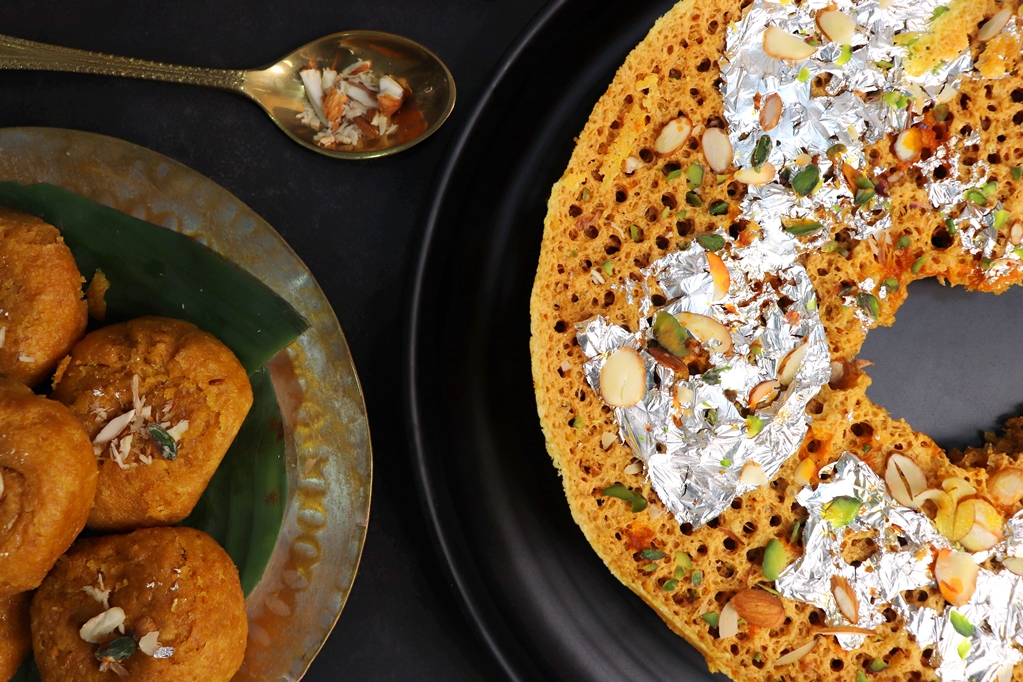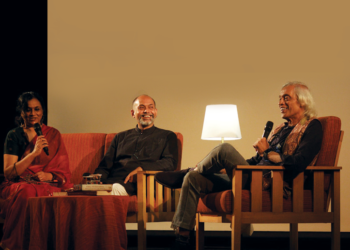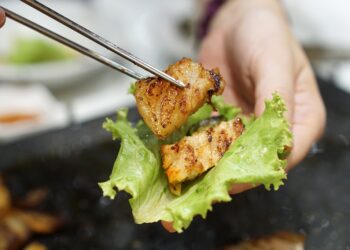There’s something happening round the year in this wonderful country of ours. Come the monsoon, we have a slew of festivals. Teej, although celebrated only in a few states, is special for the sheer exuberance that comes with the downpour
BY RUKMA SALUJA
We look forward to the monsoon for so many reasons, for our crops, recharging aquifers and water tables, feeding our rivers, respite from the relentless heat we’ve endured for months. And so when it does rain we celebrate. The smell of the earth after the first rain has even been captured in bottles by perfumers is divine. July, August and September correspond to the Indian seasons of Saawan and Bhadon or Shravan
and Bhadrapada.
Teej is the main festival associated with the monsoon and is celebrated in some states in the north of the country, although the south has its own version of monsoon celebrations though on a smaller scale, largely within the family. As is the way with Indian festivities, the celebrations at Teej are sometimes preceded with women fasting for the welfare of their husbands, visits to the parents, and an exchange of gifts. We are
used to colour and exuberance in our festivities and this one is no different: It is marked by homes bedecked with flowers and rangoli, and women adorned with flowers, henna and bangles, laughter while playing on swings, and songs and dances.
Legend has it that after fasting rigorously for more than a hundred years, Parvati was finally accepted by Shiva as his consort. Teej is therefore a celebration of the devotion and steadfastness of a wife. Teej itself could be an insect that appears with the first rain in Nepal, where it is celebrated on a grand scale.

For Subha Singh, a housewife in Muzaffarpur, Bihar, it is a three-day event. On the day before Teej, the women wake up long before sunrise, bathe, pray, and eat sargi, which could be fruit, khajuri, fresh and dry fruit, milk and juice. They fast for the rest of the day and break the fast with a light saatvic (without garlic or onions) meal at the end of the day.
On the morning of Teej this is repeated and since the pooja is of Shankar and Parvati, the clay images are made at home and seated on a new and colourful chunri along with a kalash containing tikka, akshat, and a mango twig, covered and with a diya on it. The pooja, which includes a katha about the Shankar-Parvati legend, lasts about half an hour when prasad is first offered to the gods and is then distributed. The offerings include anartaa, tritiya and khajuri.
It’s time for the festivities to begin which last the day and continue through the night. Dressed in new and colourful clothes, adorned with flowers and bangles, it’s a time for song and dance
Haryali Teej in Haryana, on the other hand, is purely about celebration, when the women go home to their parents to get away from the stress of the marital home (that was a joke), or perhaps to just celebrate with family and childhood friends. Green is the colour from the clothes and
bangles to the henna. Ropes tied to trees as makeshift swings are a must and in fact even a part of the gift hamper for new brides celebrating their first Teej. As this is a festival for married women, the gifts must include bangles, bindi and henna, the very basics of shringar or the make-up and adornments of married women. Binu Chaudhry, who runs Ghar ki Rasoi, a tiffin service in Hissar, says, “Here, there is virtually no religious element, it is all about fun and laughter, dressing up, eating ghevar and suhaali, and competing on the swings.” It’s pucca khana—when the big kadahi comes out, you know it’s time for celebration. The special food served at festivals and special occasions includes poori, halwa and kheer, the three essentials along with options of chole, kaddoo, aloo, paneer.
In Rajasthan it is a mix of the two aspects. They fast and they have fun. Rani Sahiba Shweta Kumari of Jodhpur (if titles were allowed) says, “We dress in bright lehengas, put henna, wear bangles, fast.” Swinging is a part of the festivities. It’s the little variations that make each one special.
And so, as Shweta explains, they pray, or do pooja (sounds nicer, doesn’t it?) in the shadow of a tree. They take the husband’s name in a riddle. This is the only time in the year they can, in fact, say his name aloud. Reciting the Shiva-Parvati story is a part of the ritual. The sweets here are sattu laddoos. The gifts exchanged among the married women are to do with elements used by married women. And then there’s the ghoomar. This has to be the prettiest dance in the country, bright jewel-coloured lehengas swirling in rhythm to the vibrant sound of the dhol, mesmerising.
Bharti Garg, originally from Meerut in Uttar Pradesh, who brought her childhood traditions to her marital home in Delhi, says, “We don’t fast. It’s a day of celebration. We exchange gifts.” The colour of the day is mostly green, can be any, actually, except black and blue. The baina or the gift hamper is largely the same but must include ghevar and meethe poode. “It’s teej ka tyohar, sola singar, a festival celebrated by women,
although it’s for the husbands.” She’s amused at how this sounds but she continues unfazed, “Unmarried girls also apply henna and wear bangles and make-up. Everyone sings and dances, everyone has fun.”
It is the same for Soni Agarwal, former president of Inner Wheel in Lucknow, Uttar Pradesh. “This is a festival of ulhaas (joy) after the long hot summer when rain finally breaks the intensity of the heat. We wear green lehriya lehengas or saris, and bangles. Makeshift swings are adorned with Ashoka or mango leaves. We have song and dance competitions.” Now musical instruments and trends are different but traditionally, the
accompaniment to the merriment was always the Indian drum (dhol). “We still begin our festivities with the dhol,” says Soni. “The DJs take over after that.” Breaking from the bad press the relationship usually gets, she explains this is when there’s gentle teasing between the mother-in-law and daughter-in-law, between the sisters-in-law, when the mother-in-law gives money and tells the daughter-in-law to buy herself new
ornaments like the bicchiya or paijeb. The food is largely a chaat menu that includes popular items like dahi pakodi, chaat papdi, pani ke batashe, aloo tikki, matar tikki, paalki.
Ghevar is a must in its various forms of plain, malai, kesar and others. It is made, and eagerly consumed, only in the monsoon month of Saawan.
@gharkirasoi @rukssaluja @soniaggarwal @binuchaudhry








